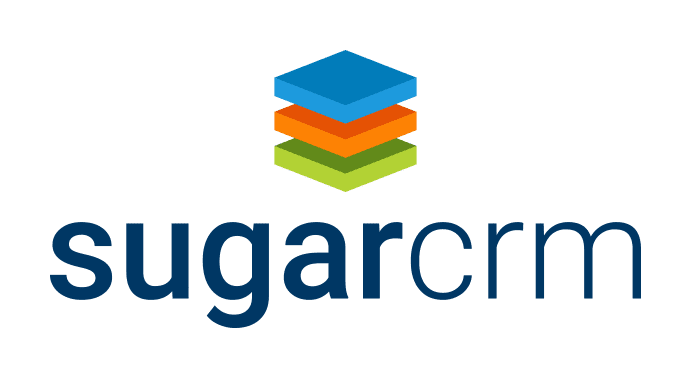Of all the relationships a CFO maintains, one of the most crucial is with their Controller. A Controller is often seen as the CFO’s right-hand person, handling day-to-day financial operations and providing important data and insights that guide strategic financial decisions.
In a fast-paced and ever-evolving SaaS industry, CFOS need to engage their Controllers in deep and strategic conversations about the company’s future. Staying competitive, continually innovating, and maintaining steady growth necessitates asking hard questions and making informed decisions.
Dive Deeper: How SaaS CFOs Automate Finance
Here we dive into five key questions SaaS CFOs should be asking their Controllers. These questions are not only designed to ensure the company is heading in the right direction, but also to identify potential risks, uncover opportunities, and create a roadmap for future growth.
What is the Optimal Deployment Model for Our Software: Fully Cloud or Partial Cloud?
Each has its benefits and drawbacks, and the choice largely depends on the company’s unique circumstances and requirements.
A fully cloud-based solution involves delivering and accessing software applications entirely over the internet. This model offers numerous advantages such as lower upfront costs, ease of scalability, automatic updates, and the ability for users to access the software from anywhere with an internet connection.
Do You Know the Difference? Cloud Networking vs. Cloud Computing
On the other hand, a partial or hybrid cloud solution allows companies to retain some on-premise infrastructure while leveraging the cloud for other aspects of the application. This approach can be beneficial for companies that have regulatory requirements necessitating certain data to be stored locally, or if there are concerns about the security of sensitive data. It can also be a good option for companies transitioning from legacy systems, as it allows them to move to the cloud more gradually and controlled.
By having this conversation, the Controller can shed light on the financial implications of these deployment models. The CFO and Controller can together build a cost-effective and efficient infrastructure that supports the company’s growth and meets its business needs.
What Are Our Mobile Capability Requirements and How Can We Best Meet Them?
Most customers expect seamless access to services across multiple devices, especially mobile. SaaS CFOs need to consider this expectation and evaluate the company’s requirements and capabilities in developing and maintaining a mobile platform.
First, is there significant enough demand for mobile access among their user base? CFOs need to understand the needs and usage patterns of their customers.
Free Download: The Executive’s Guide to Business Visibility: Mobilizing
Second, evaluating the costs associated with offering a mobile solution is crucial. Development costs, testing and deployment, ongoing maintenance, and potential integration with existing systems are where the controller can provide valuable insight into the financial implications of building and supporting a mobile platform.
Additionally, it’s worth considering the potential benefits of mobile capability. Beyond satisfying customer demand, a mobile platform can also present new revenue streams, such as mobile-specific features or premium mobile offerings. It can also enhance customer engagement, retention, and satisfaction, indirectly leading to revenue growth.
Is a Subscription or Recurring Revenue Model Best Suited to Our Company?
One strategic decision that SaaS CFOs must make concerns the company’s revenue model. Should they opt for a subscription model or focus on generating recurring revenue?
The subscription model is commonly used in the SaaS industry. It involves customers paying a regular fee—usually monthly or annually—to access the software. This model has the advantage of predictability, with steady income that can be forecasted well into the future. It also aids in customer retention, as subscribers are more likely to continue using a service for which they’ve paid.
On the other hand, recurring revenue can come from various sources, not just subscriptions. For example, it could come from ongoing service contracts, licensing fees, or transaction-based charges. A recurring revenue model provides more flexibility and can often generate higher revenues over the long term, but it may also be less predictable and stable than subscription revenue.
The decision on which model to choose depends on several factors, such as the nature of the product, market dynamics, and customer behavior.
For instance, a product that is used frequently or daily may be better suited to a subscription model, while a more specialized product that is used sporadically might generate more revenue from transaction-based charges or service contracts.
How Can We Optimize Our Costs and Increase Operating Efficiency?
SaaS businesses often face the challenge of high upfront costs associated with product development, followed by lower operational costs over time. However, managing costs effectively and optimizing operations is crucial for sustainable growth and profitability.
Start by looking at areas where costs seem particularly high or where the return on investment is low. Are there any non-core functions that could be outsourced or automated? Could renegotiating contracts with vendors or suppliers result in cost savings? Are there underutilized assets that could be divested?
Examine the company’s resource utilization as well. Is the company using its resources, both human and material, effectively? Could implementing new technology or processes result in greater efficiency? Can unit costs be reduced by increasing production volume, or are there other ways to leverage the company’s growth to reduce costs?
Ultimately, the goal is not just to reduce costs but to maximize the value that the company delivers to its customers.
How Are We Ensuring the Security and Privacy of Our Customer Data?
In SaaS, data is an invaluable asset. Companies handle large volumes of sensitive customer data, prioritizing data security and privacy. A breach can lead to significant financial loss, legal consequences, and serious damage to a company’s reputation. As such, CFOs should ask their Controllers about the measures taken to ensure data security and privacy.
The first step in ensuring data security is understanding the current protective measures. Are industry-standard security protocols followed? What encryption methods are used? Are regular security audits conducted? How often are backup and disaster recovery protocols tested?
Next, assess the sufficiency of these measures. Are they comprehensive enough to mitigate the various risks associated with data handling? How do they compare with industry best practices and the actions adopted by competitors?
CFOs should also discuss data privacy regulations with the Controller. It’s essential to ensure compliance with laws like GDPR in the EU or CCPA in California, which mandate strict rules about data collection, storage, and use. Non-compliance can result in hefty fines and legal complications.
Finally, consider the financial implications of a potential data breach. What would be the cost of an incident in terms of response, recovery, potential fines, and lost business? Are there adequate reserves or insurance coverage to handle such an event?
This is not just a matter of financial prudence but also a critical component of maintaining customer trust and safeguarding the company’s reputation.
Communication is Key
The role of a CFO in a SaaS company extends beyond overseeing the company’s financial health. By asking these key questions—on software deployment, mobile capabilities, revenue models, cost optimization, and data security—CFOs can gain crucial insights and engage in fruitful discussions with their Controllers.
These conversations aim to make informed, strategic decisions that support the company’s growth, enhance its competitive advantage, and deliver maximum value to its customers.
These five core questions provide a solid foundation for CFOs and Controllers to engage in strategic dialogue and decision-making. They are not exhaustive, nor are they static. As the SaaS industry evolves, new challenges and opportunities will arise, prompting further questions and strategic considerations.

